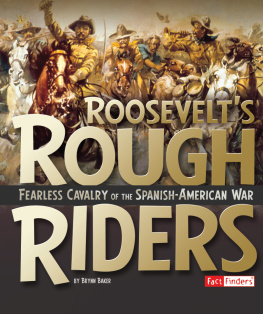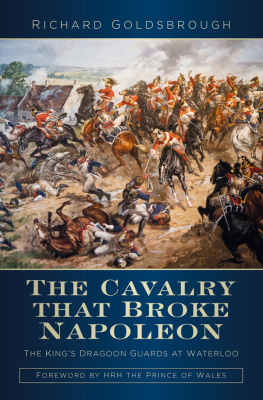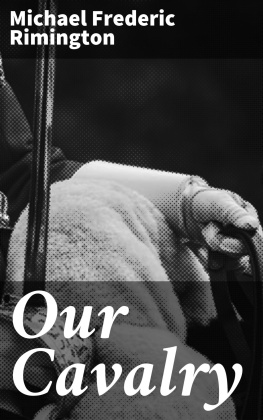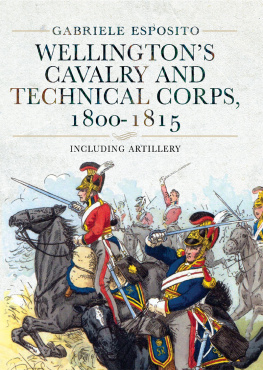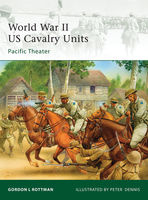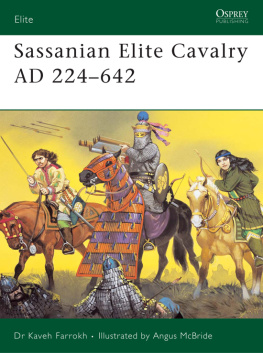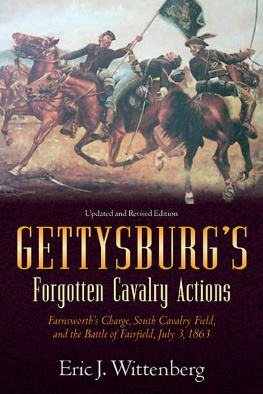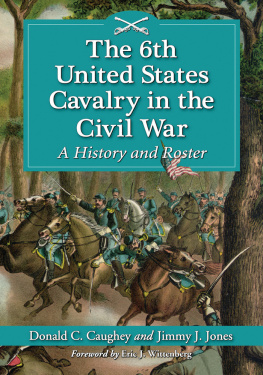A HISTORY OF CAVALRY FROM THE EARLIEST TIMES
With Lessons for the Future
GEORGE T. DENISON

This 2011 edition published by Barnes & Noble, Inc.
All rights reserved. No part of this publication may be reproduced, stored in a retrieval system, or transmitted, in any form or by any means, electronic, mechanical, photocopying, recording, or otherwise, without prior written permission from the publisher.
Barnes & Noble, Inc.
122 Fifth Avenue
New York, NY 10011
ISBN: 978-1-4114-4895-7
PREFACE TO THE SECOND EDITION
T HIS book was first published in London in March 1877.As mentioned in the Preface to that edition, it had been prepared to compete for the Emperor of Russia's Prize offered for the best History of Cavalry. Permission was given me to publish the English edition without waiting for the decision.
In September 1877, I received notification from the Russian Authorities that it was decided that I should receive the first prize of 5,000 Roubles, which was forwarded to me shortly after.
The book was also translated into German by Colonel Brix of the Prussian General Staff, and published in Berlin in 1879.
Over thirty-six years have elapsed since the publication in London in 1877 and for about thirty years the book has been out of print, and of late years very difficult to obtain. As it is, I believe, the only general history of the Cavalry Service that has been published in any language, and as history does not change, I am having it reprinted exactly as it originally appeared, without note or alteration. The concluding period on "The Organization, Armament and Employment of Cavalry in Modern Warfare," is the only portion upon which comment need be made, and that can be dealt with in this Preface.
Thirty-six years ago the prejudice among the professional cavalry officers against the use of firearms by cavalry was universal and very extreme. As the principles laid down in Chapter XXXII of my book were based upon the use mainly of the rifle and the revolver, and as in 1877 the idea was comparatively new, very little attention was paid by the British cavalry to doctrines so opposed to all their teaching and traditions. I had predicted that in the next great war, "whichever nation employed mounted rifles extensively would be found winning decisive campaigns by the wise adoption of a necessary reform." This was only a repetition of what I had said in my book on "Modern Cavalry," published in 1868.
The experiences of the subsequent wars, the Boer war of 18991902 and the Russian-Japanese war of 1904, have confirmed in a remarkable degree the necessity for the adoption of modern firearms by the mounted soldier, and have completely vindicated the soundness of the principles which I advocated.
The Boer war was a most illuminating experience, and throws a great light upon the advantage of the mounted rifle principle in modern war. When the British forces were sent to South Africa in 1899, the infantry predominated, a small number only of cavalry regiments being sent, armed with swords or lances and depending mainly upon those weapons. The colonies offered contingents to assist the Mother Country and were at first requested to send infantry alone and not horsemen. The traditions of the wars of Frederick and Napoleon dominated the ideas of our military leaders.
The war began on the 11th October 1899. The British force consisted mainly of infantry and artillery, in addition to a few regiments of the old type of cavalry. On the other side the Boers had an army of mounted riflemen, with an effective artillery. Our army suffered a long series of defeats at first. Lombard's Kop, as well as, Stormberg, Magersfontein and Colenso (the black week) will not be forgotten by the British people for generations. The tide was turned afterwards by the energetic use of cavalry or mounted rifles. General French, our best cavalry general, broke through the Boer lines at Klipdrift by a charge of horsemen, and relieved Kimberley; but Cronje with his army would have escaped had it not been that General French rapidly retraced his steps, passed the flank of Cronje's retreating army, and seizing Koodoesrand Drift, cut off his retreat, held him by fire action, and so ultimately caused his surrender.
There has been in the last few years some interesting literature upon the question as to whether cavalry in the future should depend upon fire action, or upon the "Arme Blanche." Probably the most important work is by General Von Bernardhi of the German army on Cavalry in Future Wars, published first in 1899, and a second edition in 1902, translated by Charles Sydney Goldman, and published in English in 1906, with an introduction by General Sir John French. This was followed by a very able criticism in War and the Arme Blanche, a book written by Ernest Childers, the editor of Volume V of the Times' "History of the War in South Africa." This has a very interesting introduction by Lord Roberts, and was published in 1910. Contemporaneously with the publication of War and the Arme Blanche, General von Bernardhi published in Germany another book translated by Major Bridges, under the title Cavalry in War and Peace. This English edition also contained a Preface or Introduction by General Sir John French. This led Mr. Ernest Childers to write another critical work in reply, entitled German Influence on British Cavalry.
These books with the writings of Colonel Henderson, Sir Ian Hamilton, and Count Wrangel, enable one to gather the opinions of the best authorities of the day on the disputed question of the effect of the improved fire arms on cavalry in contrast with the principle of the arme blanche. When my History was published in 1877, almost all cavalry officers were opposed to the mounted rifle principle, which I advocated so strongly. I wish now to show how the South African War, and the Russian Japanese War, have modified the opinions of the foremost cavalry leaders and writers.
The late Colonel Henderson, speaking of the German cavalry during the war 187071, says "The troopers knew nothing whatever of fighting on foot. Their movements were impeded by their equipment, and a few Franc-tireurs armed with the chassepot were enough to paralyze a whole brigade." And again, "Should not the cavalry, confronted by new and revolutionary conditions, have sought new means of giving full effect to the mobility which makes it formidable?"
Lord Roberts, in his Introduction to Mr. Childers' book, is also very clear and definite in his views about the rifle as the arm for mounted men; speaking of the Boer War he says, "As however it was the first war in which magazine rifles were made use of and as the weapon used in future wars is certain to be even more effective on account of the lower trajectory and automatic mechanism about to be introduced, shall we not be very unwise if we do not profit by the lessons we were taught, at such heavy cost, during that war?"
Referring to Mr. Childers' statement, that the cavalry theory so far as it was based on the arme blanche had collapsed Lord Roberts says, "Why did our cavalry fail? Because they did not know, because they had never been required to know now to use the principal and most useful weapon with which they were armed." Again speaking of General French's admirable movement at Klip Drift he says, "It was a rapid advance of warriors, who possessed the ability by means of horses and rifles (not swords and lances) to place their enemy hors-de-combat. It was an ideal cavalry operation, but it was not a 'cavalry charge,' as this term is generally understood, and the Arme Blanche had nothing to say to it."


